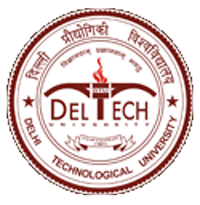Please use this identifier to cite or link to this item:
http://dspace.dtu.ac.in:8080/jspui/handle/repository/16086| Title: | ANALYSIS OF REGENERATION SYSTEM OF METRO TRAIN AND USE OF TECHNOLOGY ENHANCEMENT TO IMPROVE REGENERATION AND ENERGY SAVING MEASURES IN METRO TRAIN SYSTEM |
| Authors: | TIWARI, ANAND KUMAR |
| Keywords: | REGENERATION SYSTEM TECHNOLOGY ENHANCEMENT METRO TRAIN SYSTEM ENERGY CONSUMPTION |
| Issue Date: | Jul-2016 |
| Series/Report no.: | TD-3091; |
| Abstract: | The global energy scenario and climatic changes have forced mankind to reorient the development model for minimizing energy needs and energy consumption. Energy conservation grows in importance worldwide in terms of preventing of global warming. The Transportation sector is one of the largest consumers of energy, with significant contribution to CO2 emissions. Transport emissions of today are over 30% higher than in 1990. By using energy efficient electric traction with regeneration capability and optimal vehicle design, Metro and Railway operators are continuously improving specific energy consumption and their environmental commitments. Adoption of multipronged strategies for minimizing energy consumption by analyzing each and every consumption point right from the vehicle manufacturing to its ultimate utilization and recycling is now considered essential. Since the subject is very wide in its scope, this paper covers those critical areas which need the attention of the designers and operators. For a well-integrated public transport system it is imperative that travel be as seamless as possible and offers a simple Integrated Reliable Energy Efficient Train System and operation. This is especially true when new modes of public transport such as BRT, Light Rail, and Mono Rail are introduced. To execute a seamless multi-modal integration, an electronic system for unified fare collection and indisputable settlement among operators is essential. Traction accounts for about 60-80% of the total energy consumption in a Metro system. The quantity of energy consumed by trains is influenced by a wide range of factors, train design being one of them. Hence, optimization of the overall system design in order to control consumption of electricity becomes essential. The modern design of Metro Rolling Stock incorporating three phase induction motors and Converter Inverters enable recovery of a major portion of consumed electricity by way of using regenerative braking. Metro railways worldwide have reported an average of about 20% saving in traction energy on account of regeneration. Regeneration also helps to reduce heat load inside tunnel and thus reduce Air Conditioning load. With increased awareness and commitment for the environment, Metros have also taken it as Green House Gas reduction initiative. Regenerated energy is mostly used by other trains powering in the network. The quality of regenerated power is important since the injected harmonics effect signalling, communication system and other loads connected on the grid. Power electronics contribute to saving energy with their highly efficient power conversion technologies, where power devices play central roles. Therefore, one design goal in Power Electronics is the reduction of losses in power devices. Silicon (Si) has been used as a conventional material for power devices. However, power devices fabricated using Si are approaching their performance limits. Silicon carbide (SiC) power devices are expected as next-generation alternatives to conventional Si power devices because they demonstrate overwhelming characteristics in terms of loss reduction for their exceptional material properties, such as a wider band gap, a higher critical electric field strength, and a higher thermal 5 conductivity. At present, most rail car inverters use Si diodes in an attempt to deliver both higher energy savings and enhanced performance. However, in order to achieve even higher performance gains, expectations have turned to SiC because it offers high voltage resistance, having 10 times greater dielectric breakdown strength. This enables the creation of thinner devices and, in turn, reduces resistance loss when developing the new compact SiC hybrid inverter. This paper will report on the status of a present system and provide a detailed analysis and proposed solution. The goal of the project is to propose how to utilize the new technology available and save the Energy to the extent possible. |
| URI: | http://dspace.dtu.ac.in:8080/jspui/handle/repository/16086 |
| Appears in Collections: | M.E./M.Tech. Electrical Engineering |
Files in This Item:
| File | Description | Size | Format | |
|---|---|---|---|---|
| Project Report_AKT_2K13_PES_501_Final.pdf | 2.38 MB | Adobe PDF | View/Open |
Items in DSpace are protected by copyright, with all rights reserved, unless otherwise indicated.



